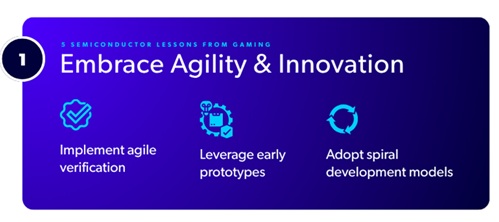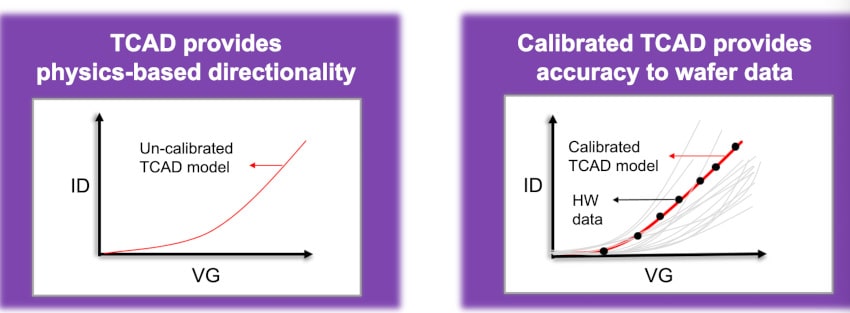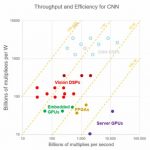Most mergers and acquisitions in the EDA world simply don’t work out financially a year or two after the deal is done, however I was pleasantly surprised to learn that Tanner EDA is doing quite well at #53DAC this year after the acquisition by Mentor Graphics back in March 2015. Everyone that I’ve been meeting with at … Read More
 5 Lessons the Semiconductor Industry Can Learn from GamingBy Kamal Khan The semiconductor world has always…Read More
5 Lessons the Semiconductor Industry Can Learn from GamingBy Kamal Khan The semiconductor world has always…Read More A Compelling Differentiator in OEM Product DesignJennifer, an OEM hardware designer, is planning a…Read More
A Compelling Differentiator in OEM Product DesignJennifer, an OEM hardware designer, is planning a…Read More Pioneering Engineer Dr. Tsu-Jae King Liu to Receive Semiconductor Industry's Top HonorIn a landmark recognition of trailblazing innovation and…Read More
Pioneering Engineer Dr. Tsu-Jae King Liu to Receive Semiconductor Industry's Top HonorIn a landmark recognition of trailblazing innovation and…Read More PDF Solutions Charts a Course for the Future at Its User Conference and Analyst DayEvery major supplier has its user event. This…Read More
PDF Solutions Charts a Course for the Future at Its User Conference and Analyst DayEvery major supplier has its user event. This…Read MoreeSilicon Offers Free Semiconductor IP For Universities!
It is easy to forget the importance of academia’s role in the semiconductor ecosystem but it is important not to. If you look at the DNA of the semiconductor industry you will see how dependent we are on academic research for innovation and the necessary disruption that keeps us all gainfully employed. FinFETs are the first things… Read More
Whose IoT devices were breached in 2015?
IoT, as we all know, is not without issues–though we have become reliant upon it in many ways.. In 2015, there were some very viable and tangible proofs that the IoT field is fraught with real peril and that we as IoT designers, developers and companies need to be paying more attention to security. Just how many different IoT … Read More
Getting Maximum Performance Bang for Your Buck through Parallelism
Finding a way to optimally parallelize linear code for multi-processor platforms has been a holy grail of computer science for many years. The challenge is that we think linearly and design algorithms in the same way, but then want to speed up our analysis by adding parallelism to the algorithms we have already designed.
But the … Read More
Industry 4.0 Challenges Should Sound Familiar to Tech Companies
Following a series of acquisitions, one manufacturer is planning to pivot from a business model based on hardware sales to one based on monthly fees for bundled hardware, software, service, and connectivity. Sensors, the cloud, wireless connectivity and data analytics all play a role in this new model. It is a massive undertaking… Read More
10 signs on the neural-net-based ADAS road
Every day I read stuff about the coming of fully autonomous vehicles, and it’s not every day we get a technologist’s view of the hurdles faced in getting there. Chris Rowen, CTO of Cadence’s IP group, gave one of the best presentations I’ve seen on ADAS technology and convolutional neural networks (CNNs) at #53DAC, pointing… Read More
ARM and Mentor Enabling the Ecosystem for the Backbone of IoT
Charlene Marini (VP of ARM Segment Marketing) did a nice presentation at the ARM/Mentor Summit last month at the Mentor HQ in Fremont. I just got the slides so let me give you a quick summary from my notes. It was a very good presentation on IoT and emulation which in my mind is the new simulation. I also attended an IoT panel at #53DAC that… Read More
Why is the IoT Catnip to Hackers?
The latest developments in IoT security will protect the companies that use them from disastrous hacks.Rob Enderle writing in CIO Magazine May 20 about a new security certification for IOT products lauded the new offering and cited other measures that responsible IoT businesses must take to secure the future of their companies.… Read More
Bridging the Gap between Foundry and IC Design at #53DAC
In our semiconductor ecosystem we often specialize the engineers and therefore EDA tools into separate silos like Foundry, front-end design, back-end design, tapeout, etc. What I discovered at #53DAC a few weeks ago was that some EDA companies actually bridge the gap between foundry engineers and IC designers with their tools.… Read More
NVIDIA Extends Their Datacenter Performance Lead In Neural Network Computing
At NVIDIA’s GPU Technology Conference (GTC) 2016 in San Jose, California the company announced products based on their latest GPU architecture, code-named Pascal. This conference is traditionally attended by some of the leading researchers in GPU-accelerated compute technologies and over the past few years has become increasingly… Read More







AI RTL Generation versus AI RTL Verification